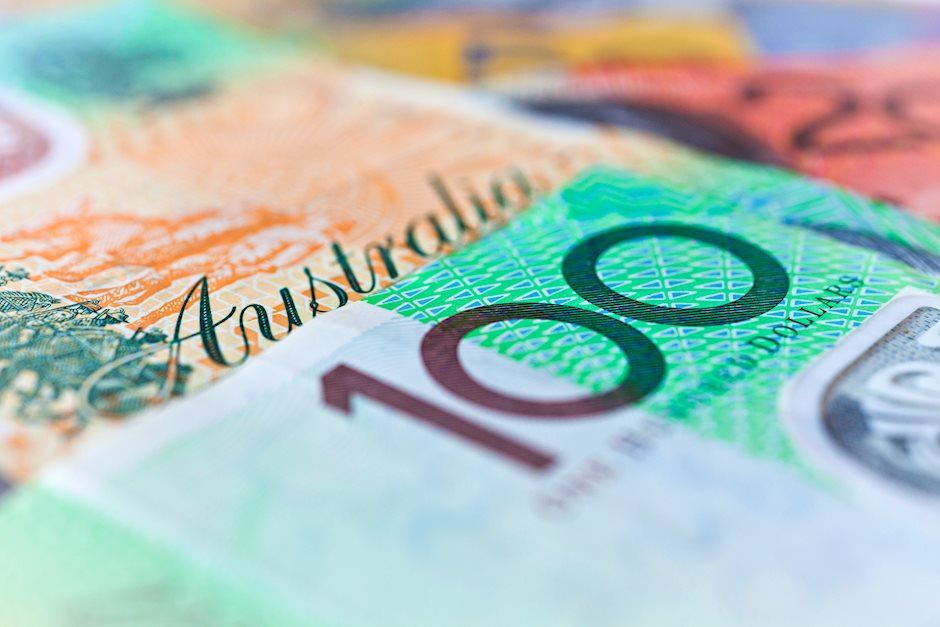AUD/USD stand firm above 0.6500 with markets bracing for Aussie PPI, US inflation
- AUD/USD steady after a 0.33% gain Thursday, spurred by US GDP and rising inflation.
- Market now expects the first Fed rate cut in November, not September, based on latest economic data.
- Investors eye upcoming Australia PPI and US Core PCE figures for more market direction.

The Aussie Dollar begins Friday’s Asian session on the right foot against the Greenback after posting gains of 0.33% on Thursday. The AUD/USD advance was sponsored by a United States report showing the economy is growing below estimates while inflation picked up. The pair traded at 0.6518, virtually unchanged.
AUD/USD reflects continued market reaction to US data
Wall Street ended Thursday’s session with losses, which usually could’ve affected the Forex markets, but it didn’t. The US Dollar is under pressure following the release of a softer-than-expected GDP report, which, coupled with a surprise on a higher Core Personal Consumption Expenditure Price Index (PCE) on a quarterly basis, spurred investors to priced out rate cuts by the Fed.
Market pricing for the Fed's first 25 basis point (bps) rate cut was pushed back from September to November.
Other US data revealed that the labor market is still solid. There were 207 K Americans filing for unemployment claims, below estimates of 214K and the previous reading of 212 K.
AUD/USD traders sent the pair sliding towards its daily low of 0.6485 before recovering some ground. As Friday’s session begins, they will be eyeing the release of the Producer Price Index (PPI) in Australia and the US Core PCE figures on a monthly basis during the North American session.
AUD/USD Price Analysis: Technical outlook
Despite registering gain for the fourth straight day, the AUD/USD remains bearishly biased, with price action at 0.6525 below the 50 and 200-day moving averages (DMAs). If bulls gather momentum and push prices above that level, up next would be the 100-DMA at 0.6585, standing on their way to 0.6600. Conversely, further weakness could drag the pair below 0.6500. This paves the way for subsequent losses, with the next key support level at 0.6442, followed by the year-to-date (YTD) low at 0.6362.
Australian Dollar FAQs
One of the most significant factors for the Australian Dollar (AUD) is the level of interest rates set by the Reserve Bank of Australia (RBA). Because Australia is a resource-rich country another key driver is the price of its biggest export, Iron Ore. The health of the Chinese economy, its largest trading partner, is a factor, as well as inflation in Australia, its growth rate and Trade Balance. Market sentiment – whether investors are taking on more risky assets (risk-on) or seeking safe-havens (risk-off) – is also a factor, with risk-on positive for AUD.
The Reserve Bank of Australia (RBA) influences the Australian Dollar (AUD) by setting the level of interest rates that Australian banks can lend to each other. This influences the level of interest rates in the economy as a whole. The main goal of the RBA is to maintain a stable inflation rate of 2-3% by adjusting interest rates up or down. Relatively high interest rates compared to other major central banks support the AUD, and the opposite for relatively low. The RBA can also use quantitative easing and tightening to influence credit conditions, with the former AUD-negative and the latter AUD-positive.
China is Australia’s largest trading partner so the health of the Chinese economy is a major influence on the value of the Australian Dollar (AUD). When the Chinese economy is doing well it purchases more raw materials, goods and services from Australia, lifting demand for the AUD, and pushing up its value. The opposite is the case when the Chinese economy is not growing as fast as expected. Positive or negative surprises in Chinese growth data, therefore, often have a direct impact on the Australian Dollar and its pairs.
Iron Ore is Australia’s largest export, accounting for $118 billion a year according to data from 2021, with China as its primary destination. The price of Iron Ore, therefore, can be a driver of the Australian Dollar. Generally, if the price of Iron Ore rises, AUD also goes up, as aggregate demand for the currency increases. The opposite is the case if the price of Iron Ore falls. Higher Iron Ore prices also tend to result in a greater likelihood of a positive Trade Balance for Australia, which is also positive of the AUD.
The Trade Balance, which is the difference between what a country earns from its exports versus what it pays for its imports, is another factor that can influence the value of the Australian Dollar. If Australia produces highly sought after exports, then its currency will gain in value purely from the surplus demand created from foreign buyers seeking to purchase its exports versus what it spends to purchase imports. Therefore, a positive net Trade Balance strengthens the AUD, with the opposite effect if the Trade Balance is negative.
Author

Christian Borjon Valencia
FXStreet
Christian Borjon began his career as a retail trader in 2010, mainly focused on technical analysis and strategies around it. He started as a swing trader, as he used to work in another industry unrelated to the financial markets.


















